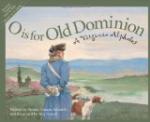As we passed the tender, it was moving the red buoy at the mouth of our creek farther out into the river. Evidently the shoals were encroaching upon the channel. Gadabout showed little interest in the strange boat and its doings; and, unconcernedly turning her back, headed up the river. Of course buoys were all very well and she found them quite a help in getting about; but all this fussy shifting of them by a few feet mattered little to her, for she was on the wrong side of them most of the time anyway.
However, we thought of how differently the watchful buoy-tender would be regarded by the heavy laden freighters that would pass that way, their rusty hulls plowing deep. To them how important that each buoy, each inanimate flagman of the river route, should stand true where danger lies and truly point the fairway.
Reaching the little cove below the steamboat pier, Gadabout ran close in and cast anchor. She may well have been proud of the quite perceptible waves that she sent rolling to the shore and of the quite audible swish that they made on the beach.
That morning we saw the landward front of Westover, and straightway forgot all about the more pretentious river front. You step from the house down into an old-time courtyard. At first you do not see much of the courtyard itself, for you have heard of its noted entrance gates, perhaps the first example of ornamental iron-work in the colonies, and they stand quite conspicuously in front of you. These gates were imported from England by Colonel William Byrd, whose initials, W.E.B., appear inwrought in monogram.
Two great birds standing on stone balls top the gate-posts. With a fine disregard of both ornithology and heraldry these birds have often been spoken of as martlets—the martlet appearing in the Byrd coat of arms. They are evidently eagles, and pretty well developed specimens. American eagles, we might call them, if they had not lighted upon these gate-posts before the American nation adopted its emblem—indeed before the American nation was born. When, in the days of the Civil War, the Federal troops came along, the soldiers seem to have stood strictly upon chronology, and to have determined that these fine prerevolutionary birds were not entitled to any immunity as national emblems nor even as kinsfolk of “Old Abe.” And so their tough feathers flattened many a bullet, and one eagle had to be sent to Richmond to get some toes and a new tail.
Turning from the gates, your eyes follow down the courtyard toward the garden. Walls, outbuildings, the quaint cellar-hut, even the diamond-shaped stepping-stones along the way, all help to make up a characteristic colonial scene.




